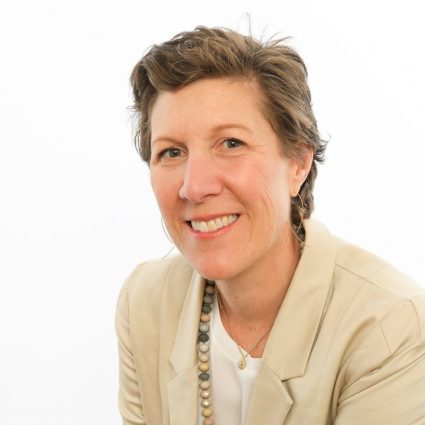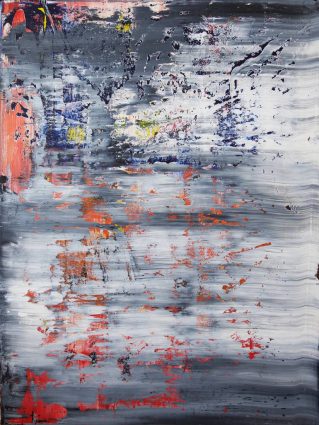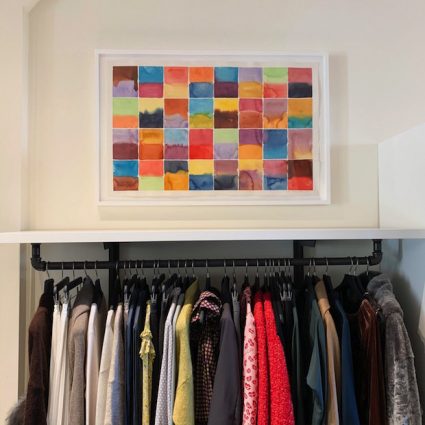MarinArts has launched its first ever Holiday Art Directory to showcase local organizations and artists, and inspire Marin residents to buy and collect local artwork, … and maybe even start this shopping holiday season.
To help our readers demystify art buying and collecting process, I caught up with local art consultant Bettina Stiewe from Upstart Modern at the Quarry Hill Antiques in the Mill Valley Lumberyard. Bettina has supported the owner of this new shop by filling the walls with eye-catching artwork. The result is a series of vignettes with elegant combinations of contemporary art surrounded by an eclectic mix of fine furniture and housewares. This pop-up shopping experience makes it easy to feel the thrill of living with art.

Upstart Modern helps artists advocate for themselves, non-experts develop an eye for art, and interior designers enliven spaces with thoughtfully-selected art that completes a look. The key to Bettina’s art consulting approach is getting her clients out to look at art and meet the artists. Then, she helps them build a visual language by discussing interests and narrow down likes and dislikes. Her favorite places to see art and meet artists in Marin — ICB in Sausalito, Art Works Downtown in San Rafael, Mill Valley’s O’Hanlon Center for the Arts and some great local galleries such as Seager Gray and Kim Eagles-Smith.
What was the inspiration for your art consulting business?
My family started collecting back in the era of Modern Art. The art that I grew up with was of the 1960s era, and my parents were able to collect at an affordable price point. We enjoyed living with the art, and prices for these artists grew. It has became harder to acquire these particular artists. Then, I got involved with the Headlands Center for the Arts and began to realize that others can do what my parents did too: enjoy living with art and buy emerging artists.
What is your point of view on art consulting?
From the start, my business was always about meeting the artist, having a personal connection, and helping people develop that confidence.
Artists started coming to me saying “I don’t have anyone who I feel like is on my side. I have a gallery promoting me but I don’t have anyone working with me on business decisions such as what gallery to align with.” I started going deep with a few artists, and working closely with them over several years. Now, I work with 10-11 artists as a liaison with their galleries and some designers to help market their work.
However, a lot of my business is on the consulting side. I help make those artists affordable for my clients. But if they’re not interested, then I work with the collector to figure out what works for them and their own aesthetic. I don’t promote a certain aesthetic. I help them unravel how they want their surroundings to look and feel like, and create that with knowledge and purpose.
Many of my clients don’t have a background in the arts, an art history background, or a level of knowledge about collecting. One way to start is by finding a high-quality artist with an expertise and also affordable.

When you are working with individuals, how does it start? Do they start out asking to fill a space or just a general interest in collecting art?
It’s a fairly intimate process of helping a client build a language. It usually starts with comments like “I have a big wall, and I don’t know what to put there” or “I look at art but I don’t know what I like.” This starts the conversation. Then, over time I hear “Oh my god I had no idea how much I loved being surrounded by this” and “I’m so glad we took our time to learn.”
It starts a little bit about a look we’re trying to create as the starting point. Then the clients get more confidence, then we go deeper into more challenging work.
The hardest part is that we all come from different backgrounds. We all have an aesthetic but we don’t realize it. We have inclinations from what we grew up with so when two people’s aesthetics come together it can be a point of conflict. I work to help bridge this difference by finding the commonality, and make it their own story. It’s a conversation. Then, the art is something that they bought together.
How do you help with the discovery process? Tools, outings, etc.?
Now, in Covid it’s a little different. In the past, I took clients on studio visits. I just took a client on a studio visit. She plans to make purchases in the spring so we are starting to develop her interests. I take people to museums, and gallery shows. I’ve planned group outings, such as tours of the di Rosa (Center for Contemporary Art). I take people to auctions and art fairs.
Some clients I’ve worked with for many years and several locations or houses. I know them, their sense of aesthetic, their interests, how they spend time. This all adds up to something that is much more personal, rather than just buying something off the shelf in a gallery.
Do you work with interior designers?
I work with interior decorators as an art buying facilitator. I also try to educate them with details like how things are made, etc. so they can share this with their clients, if they choose. There is a growing interest and curiosity from designers to help their clients with art buying. I’m happy to help. Sometimes I can work as a support to an interior designer by helping them by making recommendations since I’m looking at so much art.

What are the first steps when working with you?
I like to start by getting agreement on certain things such a color/no color, calming/energizing, local artist/not local. And then we continue narrowing on certain things like size, budget, interests, curiosities. Often men prefer representational style. Women seem to like abstracts, which is more emotionally driven. We continue to narrow the universe as much as possible.

Pamela Coddington is a writer and editor. Full disclosure: She is a big supporter of the arts in Marin County and has done work with Youth in Arts, Image Flow Photography Center, di Rosa Center for Contemporary Art, Smith Andersen North, and Headlands Center for the Arts. Pamela is a graduate of New York University with a B.A. in Art History, and holds a post-baccalaureate degree in writing from U.C. Berkeley. Pamela lives and works in San Rafael with her family.